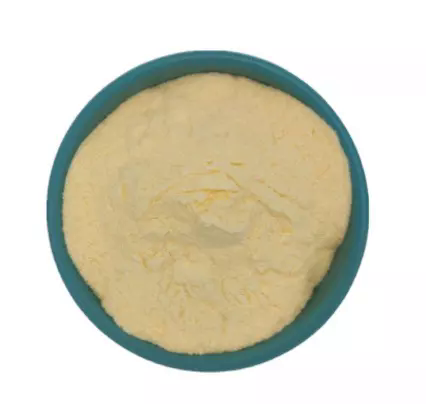Sarcosine
Synonym(s):N-Methylglycine;Methylaminoacetic acid, N-Methylglycine;Sarcosine
- CAS NO.:107-97-1
- Empirical Formula: C3H7NO2
- Molecular Weight: 89.09
- MDL number: MFCD00004279
- EINECS: 203-538-6
- SAFETY DATA SHEET (SDS)
- Update Date: 2025-12-23 21:30:31

What is Sarcosine?
Chemical properties
White crystalline powder
The Uses of Sarcosine
Sarcosine can improve people's intelligence, especially for exams such as the students need to temporarily increase the effectiveness of intelligence is more obvious. sarcosine can increase muscle strength and anaerobic explosiveness.To prevent damage caused by the brain injury. Sarcosine can effectively improve athletic performance,power, and shorten muscle recovery time.
The Uses of Sarcosine
Has been found in starfish and sea urchins. It is used as intermediate in the synthesis of antienzyme agents for toothpaste. Found to be a marker for prostate cancer bioagression.
The Uses of Sarcosine
sarcosine is a naturally occurring amino acid that is used in cosmetic formulations as a skin conditioner. There are some studies indicating that it is effective for oily skin. Its chemical name is n-methyl glycine.
The Uses of Sarcosine
Sarcosine is an important component for the production of the amino acid glycine and a byproduct of glycine breakdown. In the body, it is produced by converting dietary choline to glycine or breaking down methionine into glycine. It can also be synthesized in the laboratory with chloroacetic acid and methylamine. Sarcosine has a unique mild sweetness. Since a derivative of creatine helps prevent tooth decay and causes foam, it acts as an ingredient in toothpaste. Sarcosine can also be used as a drug, and research over the past 20 years has revealed its role in treating mental health disorders such as schizophrenia and depression.
What are the applications of Application
Sarcosine is a compound that potentiates the action of glycine on the NMDA glycine binding site
Definition
ChEBI: Sarcosine is a N-alkylglycine that is the N-methyl derivative of glycine. It is an intermediate in the metabolic pathway of glycine. It has a role as a glycine transporter 1 inhibitor, a glycine receptor agonist, a human metabolite, an Escherichia coli metabolite and a mouse metabolite. It is a N-alkylglycine, a N-methyl-amino acid and a member of N-methylglycines. It is a conjugate base of a sarcosinium. It is a conjugate acid of a sarcosinate. It is a tautomer of a sarcosine zwitterion.
General Description
Deliquescent crystals or powder. Has a sweetish taste.
Air & Water Reactions
Deliquescent. Water soluble.
Reactivity Profile
Sarcosine is an amide. Amides/imides react with azo and diazo compounds to generate toxic gases. Flammable gases are formed by the reaction of organic amides/imides with strong reducing agents. Amides are very weak bases (weaker than water). Imides are less basic yet and in fact react with strong bases to form salts. That is, they can react as acids. Mixing amides with dehydrating agents such as P2O5 or SOCl2 generates the corresponding nitrile. The combustion of these compounds generates mixed oxides of nitrogen (NOx). Sarcosine is incompatible with acids. .
Fire Hazard
Flash point data for Sarcosine are not available. Sarcosine is probably combustible.
Biological Activity
Endogenous inhibitor of GlyT1 that displays antipsychotic activity. Potentiates the action of glycine on the NMDA glycine binding site.
Side Effects
Sarcosine, a dietary supplement, is generally considered harmless with minimal side-effects. However, some individuals report experiencing euphoria and hyperactivity after consuming it. Men taking sarcosine may have an increased risk for prostate cancer, while others may experience sleeplessness, irritability, and headaches.
Sarcosine: The Super Nutrient That May Reverse Schizophrenia Symptoms
Purification Methods
Crystallise sarcosine from absolute EtOH, 95% EtOH or H2O. It sublimes at 180-185o/0.3mm with 99.1% recovery [Gross & Gradsky J Am Chem Soc 77 1678 1955]. [Cocker & Harris J Chem Soc 1291 1940, Cocker & Lapworth J Chem Soc 1897 1931, Greenstein & Winitz The Chemistry of the Amino Acids J. Wiley, Vol 3 p 2750 1961, Beilstein 4 III 1121, 4 IV 2363.]
Properties of Sarcosine
| Melting point: | 208-212 °C (dec.)(lit.) |
| Boiling point: | 165.17°C (rough estimate) |
| Density | 1.1948 (rough estimate) |
| refractive index | 1.4368 (estimate) |
| Flash point: | >100℃ |
| storage temp. | Store below +30°C. |
| solubility | H2O: 1 M at 20 °C |
| form | Crystals or Powder |
| pka | 2.21(at 25℃) |
| color | Colorless or white to yellow |
| PH | 6.1 (100g/l, H2O, 20℃) |
| Water Solubility | 1480 g/L (20 ºC) |
| Sensitive | Hygroscopic |
| Merck | 14,8373 |
| BRN | 1699442 |
| CAS DataBase Reference | 107-97-1(CAS DataBase Reference) |
| NIST Chemistry Reference | Sarcosine(107-97-1) |
| EPA Substance Registry System | Sarcosine (107-97-1) |
Safety information for Sarcosine
Computed Descriptors for Sarcosine
Sarcosine manufacturer
New Products
4,4-Difluoropiperidine hydrochloride tert-butyl 9-methoxy-3-azaspiro[5.5]undecane-3-carboxylate Indole Methyl Resin N-Isopropylurea N,N-Dicyclohexylcarbodiimide(DCC) MELDRUMS ACID 5-METHYLISOXAZOLE-4-CARBOXYLIC ACID Magnessium Bis glycinate Zinc ascorbate 1-bromo-2-butyne 2-acetamidophenol 9(10H)-anthracenone Erythrosin B, 4-Piperidinopiperidine 2-((4-morpholinophenylamino) (methylthio) methylene) malononitrile 2,4-dihydroxybenzaldehyde 3-(4-morpholinophenylamino)-5-amino-1H-pyrazole-4-carbonitrile Methyl 2-methylquinoline-6-carboxylate 2,6-dichloro-4-nitropyridine 4-Bromo-2-chlorobenzonitrile 2-(benzylamino)acetic acid hydrochloride 4-(tert-Butoxycarbonylamino)but- 2-ynoic acid 3,4-dihydro-2H-benzo[b][1,4]dioxepine 1-Phenyl-1-cycloprppanecarboxylicacidRelated products of tetrahydrofuran








You may like
-
 107-97-1 Sarcosine 99%View Details
107-97-1 Sarcosine 99%View Details
107-97-1 -
 107-97-1 99%View Details
107-97-1 99%View Details
107-97-1 -
 Sarcosine 98%View Details
Sarcosine 98%View Details
107-97-1 -
 107-97-1 99%View Details
107-97-1 99%View Details
107-97-1 -
 Sarcosine CAS 107-97-1View Details
Sarcosine CAS 107-97-1View Details
107-97-1 -
 Sarcosine CAS 107-97-1View Details
Sarcosine CAS 107-97-1View Details
107-97-1 -
 Sarcosine CAS 107-97-1View Details
Sarcosine CAS 107-97-1View Details
107-97-1 -
 Sarcosine 98% CAS 107-97-1View Details
Sarcosine 98% CAS 107-97-1View Details
107-97-1
